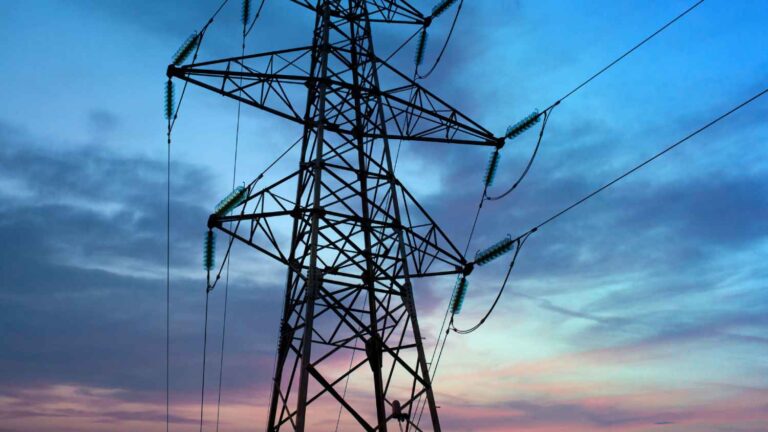In the world of Construction Management and Capital Project Management, there is no room for error. Power generation, transmission, and distribution are major components of energy infrastructure. Building and maintaining power plants, transmission lines, and distribution networks requires significant effort. At the same time, a temptation to take shortcuts, whether for economic or operational reasons, can jeopardize project quality, safety, and sustainability. Electric utility projects leave no room for error, and taking shortcuts might lead to disaster, costing significant money in the process.
Contact with electricity accounts for approximately 9% of all deaths in the construction industry. This stark reminder highlights the grave consequences of shortcuts and errors in engineering projects, emphasizing the critical importance of strict adherence to safety procedures.
It is more than safety at stake here; it is our people, our communities, and our infrastructure that need safeguarding. This is where Think Power Solutions comes in, providing resources for being ready for intricate projects. At Think Power Solutions, we know that the real price of cutting corners is a C-suite problem that can filter all the way through the organization, affecting both the CEO and the frontline employees.
The High Stakes of Electrical Infrastructure
A seemingly trivial mistake such as sub-standard materials, overlooking security norms, and hurrying up the completion of the project can cause a chain reaction of failures if things go wrong, resulting in blackouts, damage to equipment, ecological disasters, and also loss of life.
Real Cost of Shortcuts in Capital Projects
Opting for shortcuts in capital projects—in particular, those of the electric utility sort—is a roll of the dice with catastrophic stakes. Shortcuts may take many forms including;
Reduced Testing and Inspections: The infrastructure could be of questionable quality if essential tests or inspections are skipped so the project can be completed faster.
Low Quality Materials: Lower quality materials may seem to provide cost savings in the short term but may lead to machinery failure, costly maintenance, and safety hazards.
Design Flaws: Not scrutinizing and identifying design flaws can produce rework, project delays, and, in some cases, disasters.
These seemingly small shortcuts can quickly become huge headaches, cause financial repercussions for the project, and, more significantly, compromise the safety of the public. These decisions cause long-term pain that offsets even the short-term gains. Shortcuts can lead to but are not limited to below referenced issues:
Cost Overruns: Additional rework, delays, and unforeseen complications (mostly caused by poor craftsmanship and lack of planning) can deplete project budgets.
Safety Risks: A compromised electrical system is a major safety concern for workers and the general public.
Reputational harm: A company taints its reputation with each project failure, and its ability to get other contracts gets increasingly impaired.
Low customer satisfaction: Poor reliability and service reliability result in loss of consumer trust and loyalty.
The Importance of Rigor in Construction Management
In construction management, rigor is how strictly you adhere to the process, standards, and best practices as defined. This entails deep and detailed awareness of all dimensions of the project, including other facets such as in-depth risk assessment, comprehensive engineering, stringent quality control, and reliable communication channels. Therefore, in large-scale electric utility projects, where little room for error can have a domino effect, meticulousness is not just a good thing but a fundamental principle.
Business Processes
The organization has well-built business procedures that give significant help and a competitive advantage to project managers and teams to make use of at various stages of the project. These processes ensure absolute consistency, minimize the possibility of human mistakes, and keep you on track with defined stages to success, preventing errors from happening.
Project Managers
The project manager has a central role to play. These professionals coordinate every last detail of the project, ensuring that every task follows the main plan correctly and meets the best industry standards for safety and quality.
Complex Projects
Electric utility projects are inherently complex, involving a multitude of interconnected systems and components. Rigorous management is essential to navigate this complexity and mitigate the potential for errors.
Strategies to Avoid Taking Shortcuts in Electric Utility Projects
- Rigorous Oversight and Quality Control: Everyone, from management, even the CEO, to the workers on the front line of production, must be committed to a high level of quality and safety. This includes frequent coaching, clear communication, and a common pursuit of excellence. Third-party inspection, audit and peer review can provide an opportunity to recognize potential problems before they get out of hand. So, if higher standards and levels of quality are expected, then a practical quality management system is what the organization need to implement.
- Develop a Safety-First Culture: Safety should be promoted at each stage of design, engineering, construction, and operation. This includes all safety training, regular inspections, and providing means to report hazards and near misses.
- Technology should be a trend: Using state-of-the-art project management software and technology will simplify processes, improve communication, and allow for active monitoring of the project status.
- Emphasize Risk Management: Perform extensive risk assessments on all phases of the project to detect potential hazards and create a detailed response plan.
- Encourage Continuous Improvement: Review the project results on an ongoing basis to uncover and act on best knowledge practices for future efforts.
The Role of Technology in Enforcing Project Discipline
Major contributions come from the technology investments made in the areas that enforce project discipline. Project management, risk assessment, and quality control software can go a long way towards standardizing processes, detecting potential hiccups, and monitoring progress in real time. By alerting project managers to possible deviations from the plans they set up in advance, the software tools provide them with the information to prevent problems before the shortcuts become an issue.
Before you make any decisions about shortcuts, follow these first steps:
- Identify your risks and issues. Logs should be at the core of your management approach. When you take a shortcut, be honest with yourself, document it, and then examine it later to determine when the optimum time to return to it is.
- Your strategy should be proportionate to the level of expense and risk. Encourage your subject matter experts to make low-value, low-risk decisions right away, but only allow important decisions to be made once a robust structure is in place.
- Make sure you have good team advice to help you understand what’s going on. When assigning your risks to a supplier, you should make sure you are not so clueless that you are unable to choose the right source.
By adopting these strategies and embracing a long-term perspective, electric utility companies can build a safer, more reliable, and more resilient power grid that serves the needs of present and future generations.
We at Think Power Solutions know that technology cannot replace the human brain. However, technology can help the company effectively monitor projects, identify any potential problems, and ensure that everyone working on the project is working towards the same goal.
Think Power Solutions has a deep knowledge of the electric utility industry and the distinct challenges and complexities it presents. Our commitment is to complete your complex electric utility projects on time, within budget, and without sacrificing safety or quality.
Reach out today to learn more about our holistic project management approach, robust communication plans, and cutting-edge technology that will protect you from costly shortcuts, save you time, and offer you the best results.



